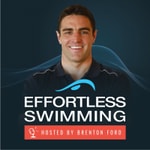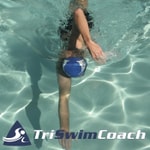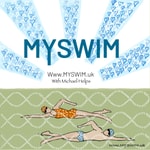Swimming Ideas Podast – Details, episodes & analysis
Podcast details
Technical and general information from the podcast's RSS feed.

Swimming Ideas Podast
Swimming Ideas, Jeffrey Napolski
Frequency: 1 episode/32d. Total Eps: 102

Recent rankings
Latest chart positions across Apple Podcasts and Spotify rankings.
Apple Podcasts
🇨🇦 Canada - swimming
31/07/2025#19🇬🇧 Great Britain - swimming
31/07/2025#40🇺🇸 USA - swimming
31/07/2025#49🇨🇦 Canada - swimming
30/07/2025#17🇬🇧 Great Britain - swimming
30/07/2025#37🇺🇸 USA - swimming
30/07/2025#35🇨🇦 Canada - swimming
29/07/2025#24🇬🇧 Great Britain - swimming
29/07/2025#36🇺🇸 USA - swimming
29/07/2025#39🇨🇦 Canada - swimming
28/07/2025#21
Spotify
No recent rankings available
Shared links between episodes and podcasts
Links found in episode descriptions and other podcasts that share them.
See allRSS feed quality and score
Technical evaluation of the podcast's RSS feed quality and structure.
See allScore global : 33%
Publication history
Monthly episode publishing history over the past years.
SIP 102: Consistent Dedication to the Mundane
Season 1 · Episode 102
lundi 4 décembre 2023 • Duration 27:30
- Consistent dedication to the mundane like streamline
- Everyone has excellent streamline habit (all the time without thought). That to NOT do a streamline would make the swimmer physically uncomfortable.
- A feeling that excellence is expected with allowance for failure, improvement, and progress.
- Swimmers feel watched, celebrated, and encouraged to improve through feedback, attention, and coaching.
See "Finding Deliberate Practice," "SIP 052: Swimming is a Habit," and "SIP 067: Deliberate Practice."
Your framework and routine should reinforce the key things you want to accomplish with your swimmers.
My number one goals:
- Everyone has excellent streamline habit (all the time without thought). That to NOT do a streamline would make the swimmer physically uncomfortable.
- A feeling that excellence is expected with allowance for failure, improvement, and progress.
- Swimmers feel watched, celebrated, and encouraged to improve through feedback, attention, and coaching.
Coach behavior on deck:
If you see something to fix, you must say sometime.
Avoid socializing and standing in one spot; unless resting.
If you are expecting excellence, then excellence is expected OF you too.
Enforce what you want done; non-enforcement = acceptable behavior.
Know when to back off; you can still say something without demining or making someone feel bad.
"You didn't streamline. Next time streamline."
"You forgot the streamline." They nod and agree. "next time." You and they smile.
--- Support this podcast: https://podcasters.spotify.com/pod/show/swimmingideas/support
SIP 101: Routine for Developmental Swimming
Season 1 · Episode 101
lundi 13 novembre 2023 • Duration 26:50
Establishing your habits, your consistency, and defining the framework that will lead to better swimmers faster.
Why routine is important:
SIP 052: Swimming is a habit (swimminglessonsideas.com)
SIP 045: Importance of Routine (swimminglessonsideas.com)
What is our routine and why do we do it?
Warmup:
100 IM K
50 Swim
2 x 25 Position 11
Question of the Day
What is the order of a 100 IM swim event?
Learning Set:
Two small groups that switch back and forth
Group 1, Skill 1
3 x SL on BK; stay underwater until you get to the flags if possible.
Group 2, Skill 2
3 x SL + 1 FLY stroke NO KICKING! Do the fly arms at the surface; okay to move yourself backwards
Aerobic and Practice what you learned set:
All together building on Question of the day and the small group practice.
3 x {
1 x 100 FREE with fins
2 x 50, 25 BK, 25 2 strokes Fly then fly kick rest of 25, then 25 BK
3 x SL + 5 FREE + 1 Breath
1 Challenge
}
--- Support this podcast: https://podcasters.spotify.com/pod/show/swimmingideas/support
SIP 092: Are you comfortable teaching?
Episode 92
lundi 5 octobre 2020 • Duration 22:25
What should you do if you are comfortable? What should you do it if you're not comfortable?
Covid-19 and the coronavirus pandemic is real. We just saw this week that the president got infected and foolishly hosted events without face coverings that subsequently infected many other people at a White house event. I know. This is insane. Right?
If the white house can't stay safe, how can we expect to remain safe while teaching swimming lessons?
We live in a world that requires us to go to work. Aquatic professionals need to bring in revenue. We need to have people taking lessons, using the pool, and participating in our programs.
How can we make ourselves feel safer?
- Set up a system.
- Wear face coverings the entire time you're coaching or teaching.
- Space participants apart with a good distance.
- Have regular airflow across the pool surface and expel it.
- Limit your exposure.
- Ask your staff what they're comfortable with.
- Screen your participants.
- Require parent involvement.
- Kick people out that don't follow your rules; be unapologetic about your own safety.
Swimming Ideas Podcast 002: Streamline
lundi 2 février 2015 • Duration 33:16
Episode 002 is all about streamline! This is perhaps the single most important skill you can master for your swim team. In this episode we give you the 3 things you should focus on to teach streamline faster and easier with better resutls.
We'll look at:
- Streamline for swim lessons
- Streamline short distances
- What words coaches and instructors can use to describe streamline effectively
- How you can use short distances to maximize small group time
- Learn how to integrate "streamline" into your directions and sets
- What you can do to constantly reinforce streamline during long sets.
Streamline is the single most important part of swimming and helps to minimize drag and increases speed during all strokes.
Streamline Video:
Streamline Drill:
http://swimminglessonsideas.com/swim-lesson-game-log-roll-streamline/
--- Support this podcast: https://podcasters.spotify.com/pod/show/swimmingideas/support
SwimmingIdeas Podcast 001: Position 11
lundi 2 février 2015 • Duration 25:38
I go in depth on what Position 11 drill is, how we use it at practice and in swim lessons, and what the benefits are. Find out what the 3 things each swimmer should focus on while doing the drill, and what three easy steps you can take to make it easier. I go over some common modifications for the drill, and talk about how you can use it in your program.
--- Support this podcast: https://podcasters.spotify.com/pod/show/swimmingideas/supportSIP 091: Swimming Ideas' Levels
Episode 91
lundi 14 septembre 2020 • Duration 35:41
Find out what Swimming Ideas Level structure is and why we use it. Learn the nuances of each level and the progression of skills that takes a 3 year old who doesn't like the water to a competitive swim team swimmer.
For all the information covered here go to: https://www.swimminglessonsideas.com/resources/
Level 1: https://www.swimminglessonsideas.com/blog/level-1/
Level 2: https://www.swimminglessonsideas.com/blog/level-2/
Level 3: https://www.swimminglessonsideas.com/blog/level-3/
Level 4: https://www.swimminglessonsideas.com/blog/level-4/
--- Support this podcast: https://podcasters.spotify.com/pod/show/swimmingideas/supportSIP 090: Teaching Swimming, Method and Delivery
Episode 90
lundi 31 août 2020 • Duration 31:53
Today is all about the online course, Teaching Swimming, that comes with the companion PDF of the physical book available on Amazon.
This training course covers the crucial skills your teachers need to begin having effective instruction. When your staff is confident, in command, and clear they can expand on having fun.
We're going to review the basics of each section and give you a brief overview on how to be a better swim instructor.
SIP 089: Safe children that LOVE swimming with Julia Johnson
lundi 24 août 2020 • Duration 01:04:43
Teach better Parent Tot, Parent and Infant classes with Julia Johnson.
Show notes here: https://www.swimminglessonsideas.com/blog/sip-089-safe-children-that-love-swimming-with-julia-johnson/
Julia Johnson grew up in Michigan where she learned to swim during summer swim lessons by going to beaches and pools.
She swam competitively in high school and then completed a few aquatrathons, sprint triathlons and a 5k swim in the years after graduation.
Julia studied mental health and social work in college and realized that her passion was building mental health through swimming and coaching.
Over the last 17 years she has worked for country clubs, community education programs, schools, athletic clubs and finally found her way to the YMCA of Memphis and the Midsouth.
During the last 17 years she's been coaching and leading staff, program design, launching new programs, teaching swimmers 3month-adults in their 90s, adaptive lessons, coaching middle school, age group swim team, and masters.
Julia is passionate about the physical and mental benefits that evolve from swimming and especially enjoys helping the youngest of our learn to swim participants and their parents.
Want more information about Julia? Email her here: julia.johnson@ymcamemphis.org
SIP 088: Teaching Breaststroke Kick to Beginners
Episode 88
lundi 17 août 2020 • Duration 33:38
Breaststroke kick is difficult to do. It is an unnatural motion for many swimmers. There will always be that small subsect of people that have learned how to do it on their own and in fact prefer it to the flutter kick motion. I believe these are people that pushed the water in the "breaststroke way" when they were learning and stuck with it because it makes them move.
Spent a lot of time watching children swim. For a long time I've been a proponent of "nurture over nature" and that genes are actually an expression of nurture over a longer timeline. Swimmers experience stuff in the water, and they build on what they've felt and experienced. Their swimming is a reflection of their trial and error experiences in the water.
We need to replace lots of their habits with better ones through repetition, time, and guidance.
Teaching breaststroke kick to beginners is one of the worst things about teaching swimming; its difficult, its hard, its frustrating, and it is the clearest example of a boring struggle to get kids to do something they don't understand, can't feel, and don't like to do.
We're going to make it easier.
A segment of people have natural breaststroke kick.
These are people that have learned intuitively the powerful force breaststroke kick can provide. You won’t really need to “teach” breaststroke kick to them beyond refinement and gliding after each kick.
Most people struggle with breaststroke kick. This progression will make it easier.
Teaching the breaststroke kick, or the whip kick, is a slog, a long press through swampy struggle that will take significant patience, repetition, and focused feedback and refinement.
Do not be discouraged.
We’ve made it easier.
Begin with “flex.”
Want to see the progression and pictures? Get the book online or join the online course: https://www.swimminglessonsideas.com/product/teaching-swimming-fun-and-effective-instruction/
Physical print book from Amazon:
--- Support this podcast: https://podcasters.spotify.com/pod/show/swimmingideas/supportSIP 087: "How can I improve?"
lundi 10 août 2020 • Duration 37:18
I feel like one of the best ways to improve my coaching and teaching is to ask myself, "how can I improve?"
We tell our swimmers to self-evaluate during their swimming. This is essentially what meditation is.
Ask a question: https://anchor.fm/swimmingideas/message
Meditation is training your brain to recognize it's doing something you don't want it to do and realigning it to your will.
If we're good at meditating, then we're going to be better swimmers if we know what to look for.
It is the coach and swim instructor's job to inform and guide the swimmer's thoughts so they can improve their swimming during a practice or lesson.
We do this through feedback and attention focusing.
There is two components:
- Knowledge dump. Learn all the things.
- Exposure
- Repetition
- Mastery
- Guided focus
- Pay attention to this one thing.
- Drills that highlight specific elements
- Do it wrong so you know how to do it right
- Mantra's, habits, and allowing mistakes.
Did that practice go well?
Did it meet the objectives I had in place?
What should I change?
What were the elements that I struggled with? What are elements of it that my participants struggled with?
Be brave to admit failures. If we ask our swimmers to fail and be comfortable in it we should be too. Make small changes to adapt to your swimmers.
Are you getting upset with the swimmers, the children, in your lessons or practices? Its's your fault. How can you reset to give yourself a chance to evaluate and reorient?
Write it down.
Make changes live on website.
Make your own lesson plans.
Give your staff training opportunities to be self aware.
- Do it wrong.
- Give them a teaching task, but put limitations on it. Can't say the word "okay" or get swimmers to Streamline without saying streamline.
- Put a time limit on number of attempts.
Build confidence in your staff and yourself by making changes on the fly and allowing freedom in lessons (contradictory to doing things a certain way. Fences with broad leeway inside those fences).
What do you do to self evaluate?
Questions? Ask a question: https://anchor.fm/swimmingideas/message
--- Support this podcast: https://podcasters.spotify.com/pod/show/swimmingideas/support







